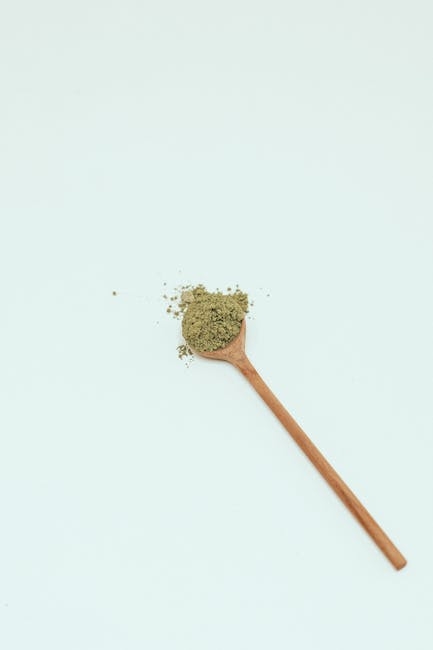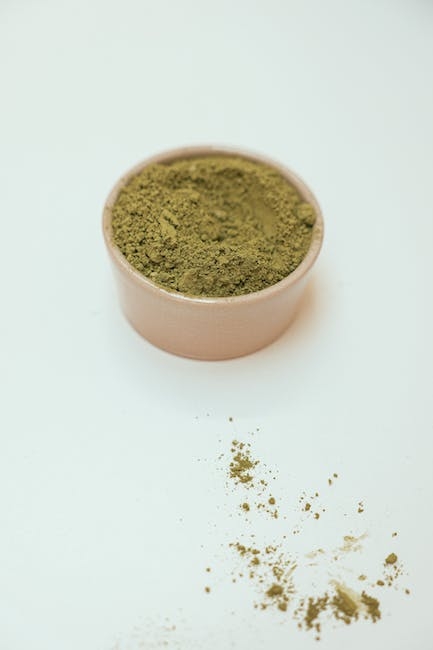Discover the Rich History and Benefits of Matcha Powder
Matcha powder is a finely ground green tea powder that has been an important part of Japanese culture for over 800 years. Its journey from China to Japan, where it became a part of Zen Buddhism and tea ceremonies, is a fascinating story that highlights the rich history and cultural significance of this unique beverage.
Origins of Matcha Powder
The history of matcha powder can be traced back to the Tang Dynasty in China when tea leaves were ground into a fine powder and used for medicinal purposes. This practice was brought to Japan in the 12th century by a Buddhist monk named Eisai, who introduced the tea seeds and cultivation techniques to the country.
Initially, matcha powder was primarily consumed by Buddhist monks for its ability to aid in meditation, promote calmness, and increase focus. The tea leaves were ground into a fine powder, which was then mixed with hot water and drunk as a beverage.
The Development of Matcha Powder
Over the centuries, the cultivation and processing of matcha powder underwent many changes. One of the most significant changes was the use of shade-grown tea leaves, which were believed to produce a more flavorful and nutrient-dense tea powder. The leaves were covered with shade cloths for several weeks before harvest, which resulted in a slower growth process and increased chlorophyll production.
Another important development was the use of new grinding techniques, which allowed for a finer and more consistent powder. Traditional stone mills were used to grind the leaves into a powder until the 20th century when modern milling techniques were introduced.
Matcha Powder Today
Today, matcha powder is still an important part of Japanese culture and is enjoyed not only in tea ceremonies but also in a variety of food and beverage products. Matcha lattes, smoothies, and desserts have become increasingly popular in recent years, as people discover the unique flavor and health benefits of this versatile ingredient.
Matcha powder is known for its high concentration of antioxidants, which can help protect against diseases and reduce inflammation. It also contains caffeine and L-theanine, which work together to promote relaxation and increase focus.
Conclusion
The history and benefits of matcha powder are truly fascinating. From its origins in China to its place in Japanese culture and modern-day popularity, this unique beverage has a rich and important story to tell. Whether you enjoy it in a traditional tea ceremony or as part of a modern beverage or dessert, matcha powder is sure to provide a flavorful and healthful experience.
The Incredible Health Benefits of Matcha Powder
Matcha powder has been used for centuries in traditional Japanese tea ceremonies, but in recent years it has gained popularity throughout the world as a health superfood. This vibrant green powder is made from finely ground green tea leaves, and is known for its high concentration of antioxidants, specifically catechins. But that’s not all – matcha powder has a variety of other health benefits that make it a worthy addition to your diet.
Boosts Metabolism and Energy Expenditure
One study found that drinking matcha powder can increase metabolism and energy expenditure, which can lead to weight loss and improved physical performance. This is due to the high concentration of catechins in matcha powder, which have been linked to improved fat oxidation and thermogenesis.
Promotes Relaxation and Reduces Stress
Matcha powder also contains L-theanine, an amino acid that promotes relaxation and reduces stress and anxiety. The combination of caffeine and L-theanine in matcha powder can provide a focused and calm energy boost without the jitters or crashes often associated with other sources of caffeine.
Improves Brain Function
Matcha powder has been linked to improved brain function and decreased risk of age-related cognitive decline. The high concentration of antioxidants in matcha powder may help protect against oxidative stress in the brain, and the combination of caffeine and L-theanine can improve attention, memory, and reaction time.
Reduces Risk of Chronic Diseases
The high concentration of antioxidants in matcha powder may also have anti-inflammatory effects, which can help reduce the risk of chronic diseases such as heart disease, diabetes, and cancer. One study found that drinking matcha powder can lower LDL (“bad”) cholesterol levels and improve overall cardiovascular health.

How to Incorporate Matcha Powder into Your Diet
There are many ways to incorporate matcha powder into your diet. The most traditional way is to whisk the powder with hot water to make a frothy tea, but you can also add it to smoothies, baked goods, or even sprinkle it on top of your morning oatmeal. Just make sure to choose high-quality, ceremonial-grade matcha powder to get the most health benefits.
Conclusion
Matcha powder is a versatile and delicious way to boost your health and wellbeing. Whether you’re looking to lose weight, reduce stress, improve brain function, or lower your risk of chronic diseases, matcha powder has something to offer. So why not give it a try and see how it can benefit your life?
Everything You Need to Know About Matcha Powder
Matcha powder has gained popularity in recent years due to its numerous health benefits and unique flavor. However, not all matcha powders are created equal. In this blog post, we will discuss the factors that determine the quality of matcha powder and how to choose the best one for your needs.
Factors That Determine Matcha Powder Quality
The quality of matcha powder depends on several factors, including:
- Type of tea plant used
- Growing conditions
- Harvesting methods
- Processing techniques
For the best quality matcha powder, look for those made from shade-grown tea leaves, specifically the Tencha variety. This type of tea has a sweeter and milder taste compared to other types of green tea. Additionally, matcha powder should be bright green in color and have a fine, silky texture, indicating that it was stone-ground into a fine powder and has not been mixed with other ingredients or additives.
Origin of Matcha Powder
The origin of matcha powder is also important in determining its quality. Look for matcha powders sourced from Japan, particularly from regions like Uji, Nishio, and Shizuoka. These regions are known for producing high-quality matcha due to their ideal growing conditions and traditional production methods.
Matcha Powder Grades
The grade of matcha powder is also a crucial factor to consider. Ceremonial grade matcha powder is the highest quality and is meant for drinking, while culinary grade matcha powder is more suitable for cooking and baking. Ceremonial grade matcha powder is made from the youngest and most tender tea leaves, resulting in a smoother and more delicate flavor.
How to Choose Matcha Powder
When choosing matcha powder, it’s essential to read reviews and check the brand’s reputation. Look for certifications like USDA Organic, Non-GMO, and Fair Trade to ensure that the matcha powder is produced ethically and sustainably. Additionally, consider the intended use of the matcha powder and choose the appropriate grade accordingly.
Conclusion
Matcha powder is a versatile and healthy ingredient that can add unique flavor and color to various dishes. By considering the factors that determine matcha powder quality and choosing the appropriate grade, you can ensure that you’re getting the best matcha powder for your needs.
The Art of Preparing Matcha: A Guide to Traditional Japanese Tea
Matcha, a finely ground powder of specially grown and processed green tea leaves, has been a cherished beverage in Japan for centuries. Drinking matcha has many health benefits, including reducing stress, enhancing cognitive function, and boosting metabolism. If you’re new to the world of matcha, don’t worry, we’ve got you covered. In this blog post, we’ll teach you how to prepare matcha in the traditional Japanese way and give you some tips on how to use it in other recipes.
Tools You’ll Need
To prepare matcha in the traditional way, you’ll need a few essential tools:
- Bamboo whisk (chasen)
- Bowl (chawan)
- Scoop (chashaku)
How to Prepare Matcha
Now that you have your tools, let’s get started on preparing your matcha!
- Boil water and let it cool for a few minutes until it reaches about 80C/176F.
- Sift 1-2 teaspoons of matcha powder into the bowl to remove any lumps.
- Add a small amount of hot water to the bowl and use the whisk to create a paste.
- Gradually add more water, whisking in a zigzag motion until the liquid is frothy and smooth.
- Aim for a ratio of 1 teaspoon of matcha powder to 2-3 ounces of water.
- Use a gentle pressure when whisking to avoid damaging the whisk or the bowl.
- It’s important to drink the matcha immediately after preparation, as it can lose its flavor and texture quickly.
Other Ways to Use Matcha
Matcha isn’t just for drinking, it can also be used in other recipes such as smoothies, lattes, and desserts. Here are a few ideas to get you started:
| Recipe | Ingredients |
|---|---|
| Matcha Latte | 1 tsp matcha powder, 1 cup milk, sweetener of choice |
| Matcha Smoothie | 1 tsp matcha powder, 1 banana, 1 cup almond milk, honey to taste |
| Matcha Ice Cream | 2 tsp matcha powder, 2 cups heavy cream, 1 can condensed milk |
Experiment with different recipes and find what works best for you. Whether you’re drinking it hot or cold, matcha is a healthy, delicious, and versatile ingredient that you’re sure to love.
So there you have it, the art of preparing matcha in the traditional Japanese way. We hope this guide has been helpful, and that you enjoy your matcha experience. Remember, practice makes perfect, so don’t be afraid to experiment and find what works best for you. Happy sipping!


Leave a Reply